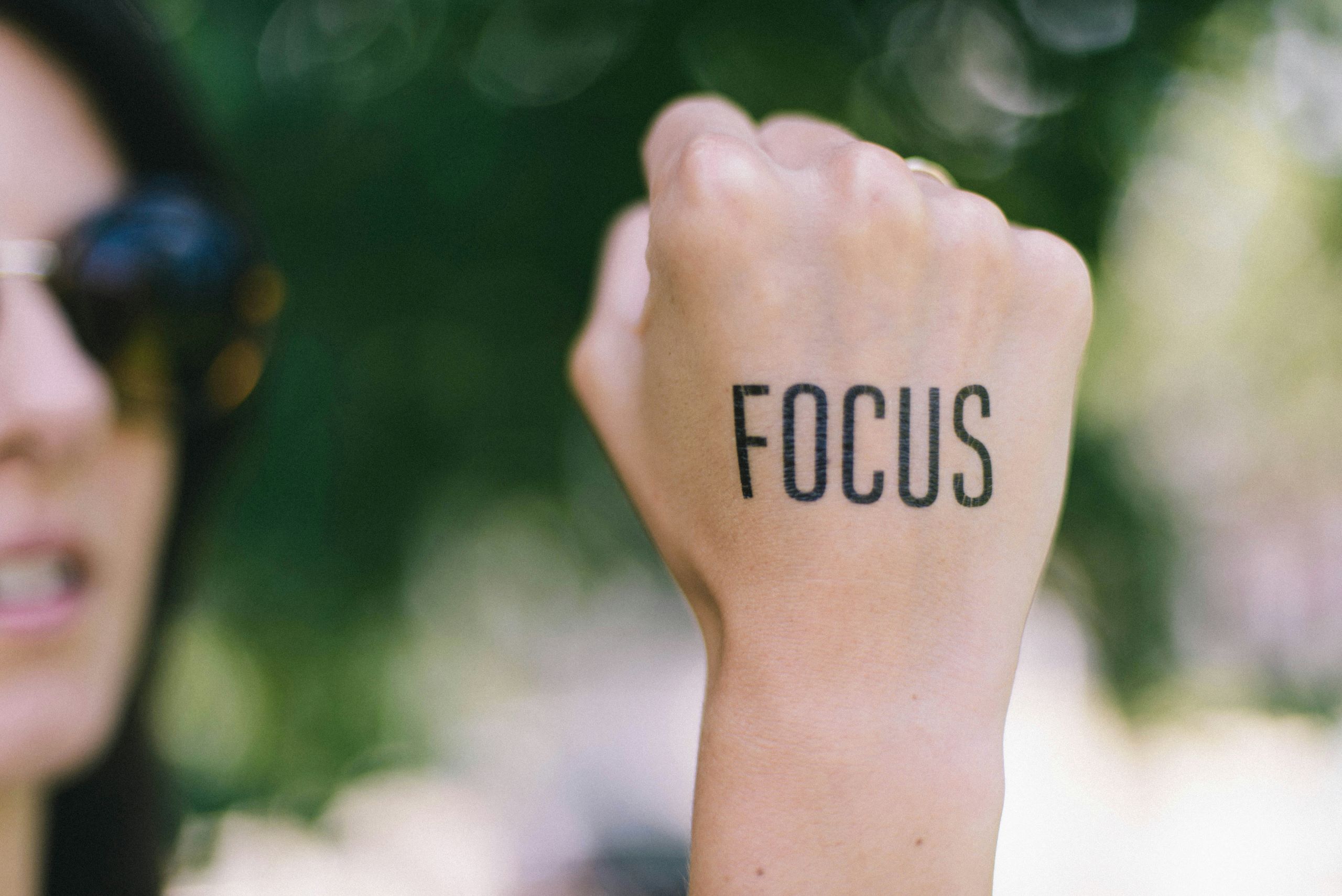Anyone who knows me knows that I’m a highly distractible person. My brain moves so, so fast. It’s hard for me to sit down and complete just one task at one time without a million different thoughts racing through my brain. Whether it’s a misguided attempt to multitask, anxiety thoughts racing through my head, or brain fog due to being tired, there are many times I need to be able to focus my attention at the task at hand so I can be effective, get things done, and move on. Here are some things that I have been implementing to help me increase my focus:
Observe and Describe

These mindfulness skills help me get into the groove of things and give me a better chance of staying there. I start by engaging with my observe skills- noticing my emotional and physical state, noticing what’s on my computer screen or the words on the page of what I’m trying to read, hearing the sounds of someone’s voice or noticing the color of their eyes or their outfit as I engage with someone, noticing my urges to move, do something else, etc. Starting off with mindful awareness of these areas and more (observe skill) and then effectively putting words on the experience (describe) helps me realize where I’m at mentally and emotionally so I can address those concerns. It helps me engage with what’s in front of me, whether that’s completing notes from session, reading a book, or talking to someone. Finally, this also helps me as I consider what I want to do vs. what needs to be done, which helps me effectively plan where I want to spend my time.
Participate
As I start engaging with the process, I try to throw myself into the experience as fully as possible. I try to enter a ‘flow state’ as much as I can, allowing myself to get lost in the activity. I will say this is easier for some tasks than others, and finding how to enter my ‘flow state’ is a skill that took some practice. My suggestion is to consider the things that you currently do that you can jump right in and participate fully. Notice what you’re doing, what it feels like, and identify what it is about that thing that allows you to engage in it fully. Translate those ideas into those less enjoyable tasks as much as you can and see if you can enter a flow state there as well.
One-Mindfully

This is a big one. Being one-mindful asks me to do just one thing at a time. If I’m reading, I just read. If I’m talking to someone, I’m fully engaged in just this conversation. To do this, I have to bring my attention back whenever it wanders. This requires mindful awareness of when my mind does wander so I can then bring it back. I also have to be gentle with my mind when it wanders. If I’m harsh and judgmental, it can lead to dysregulation and cause me to lose focus that much more. I typically try my best to notice when it starts to trail off and gently bring it back- “Ope! I’m supposed to be reading now! Thank you, brain, for thinking of these things, let’s refocus on this book.” For tips on applying the One-Mindfully skill click here.
Honorable mentions
Know your own vulnerabilities and plan for those! I will be less able to focus when I’m tired, hungry, or don’t feel well. Knowing that, I don’t read for work at night anymore because it’s not effective for me and it was just frustrating me to keep trying! If I know I’m hungry before starting a task, I try to eat a snack before engaging so I give myself a better chance at succeeding. If I’m going to a busy coffee shop and I need to get stuff done for work, I bring headphones, because I know noise is going to cause my brain to wander. Know yourself, your vulnerabilities, and plan for success as much as you can! I hope this helps!
If you want more help with skills like this, join our skills training groups or schedule with a therapist at CCDBT. We’d love to go more in-depth with this skill and many more like it!
About the Author
Maria Mangione (she/her), M.A., LPCC-S is a licensed clinical counselor who specializes in dialectical behavior therapy. She works to help people develop the tools they need to develop trust in themselves and build their life worth living. Maria believes in having meaningful connections with her clients and believes that therapy and healing can be fun. Click Here to learn more about Maria’s experience and therapeutic style.

